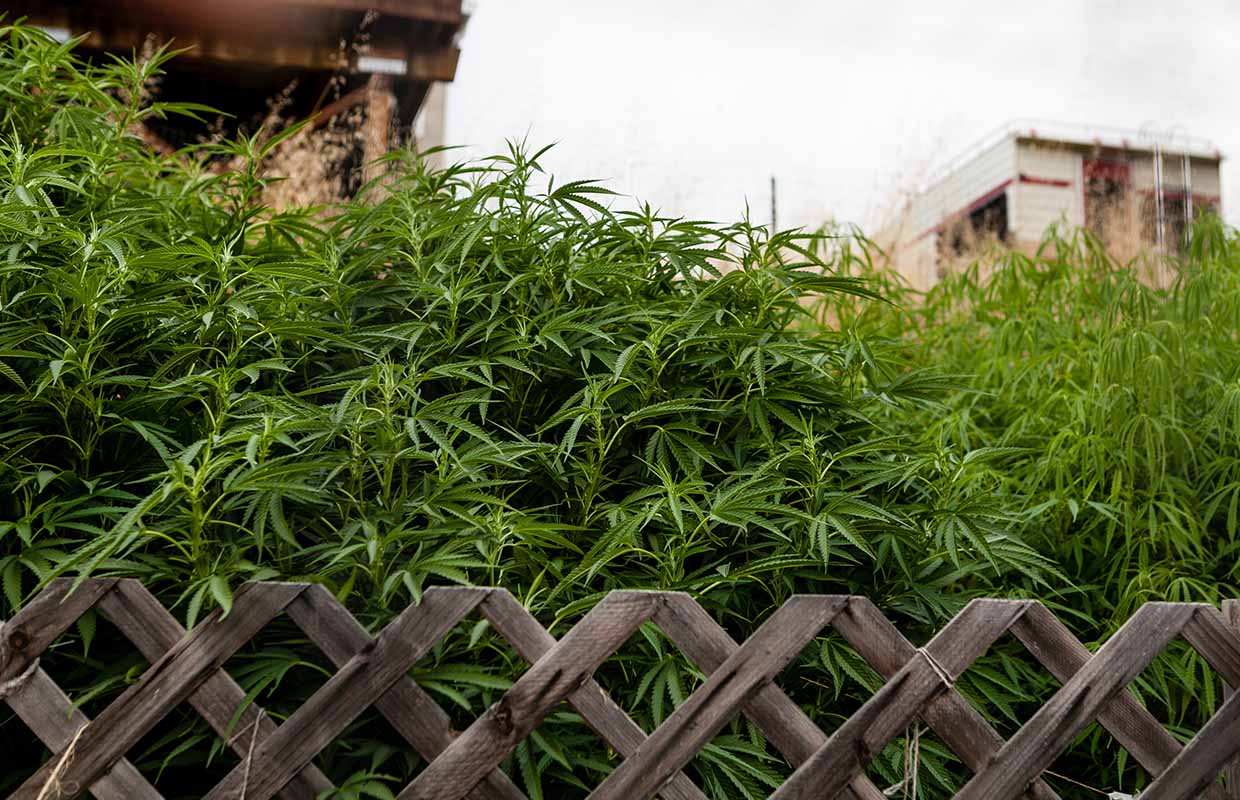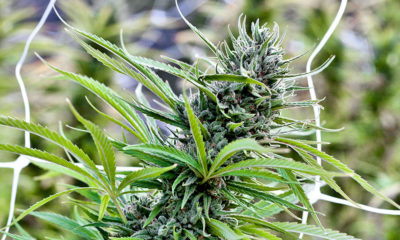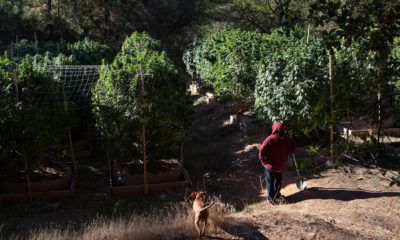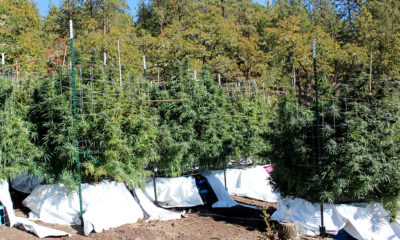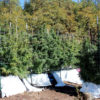Home Gardening 101
When a backyard suburban garden produces enough cannabis to sustain 20 of your closest friends for a year.
“It’s pretty wild to see a marijuana stalk grow to the circumference of a man’s bicep,” says Daniel Bennett as he circles around a raised bed garden in his backyard near San Francisco. “And the crazy thing is, this plant has about eight weeks more to mature before we harvest.”
The garden that Bennett is referring to rests on a suburban hillside in a quiet little neighborhood he’s lived in for 18 years. Thirty miles up the coast you can just barely make out the jagged skyline of downtown San Francisco hovering over the summer fog.
His raised beds were assembled in a small but sufficient 90 square foot area — the footprint of a typical pickup truck — and have for the past three years produced some of the best outdoor Cherry Pie he’s ever seen. His friends wholeheartedly agree.
“For a while there, my CP was the only thing that about twenty of my best friends were smoking all year,” says Bennett. “Last year’s crop was legendary.”
The child of Midwest farmers who picked up and moved west in the 1980s, Bennett says farming is in his blood. “I lived on a farm growing up, so I was always running through the fields and basically lived with crops all around me,” he says. “You get a feel for how things grow when you’re outside like that all the time, seeing plants live through different seasons, weather and bugs.”

The Good Earth
Cannabis cultivation began for Bennett three years ago when he purchased one little Cherry Pie clone from a dispensary for $15. It stood a mere 10 inches high but he could see from the leaf structure that the plant was a thoroughbred.
“It just looked sturdy,” he says. “There wasn’t one single sign of insect damage or powdery mildew and the structure was solid.”
He began by building an 8×11 foot raised bed out of cedar boards and brought in new topsoil to start fresh. He used basic soil, the type laid down before sodding a yard, that was inexpensive and very effective when mixed with steer manure.
“I must have brought in twenty bags of one-cubic-foot steer manure,” says Bennett. “I know the key ingredients that made my garden produce were good manure, fresh, simple soil and lots of tilling. You have to till like a madman before the plants go in.”
This year, his plants began mostly as seedlings, assisted by friends bringing back coveted Cherry Pie seeds from the bags he gave away. “It was like ‘Willy Wonka and the Chocolate Factory’ with golden tickets popping up,” says Bennett. “A friend would call or text late at night with a report that they’d found a tiger stripe seed. It was pretty cool.”
There were only four seeds found, and this year he sprouted all of them and had to cull just one that turned out to be a male plant. He also purchased seeds from the cultivar Crop King Seeds — a Haze, rumored to produce long, sticky sativa-dominant spears. And a friend gave him two promising Kandy Kush clones. Those six plants perfectly rounded out the amount of plants his medical marijuana card would allow him to grow at home.
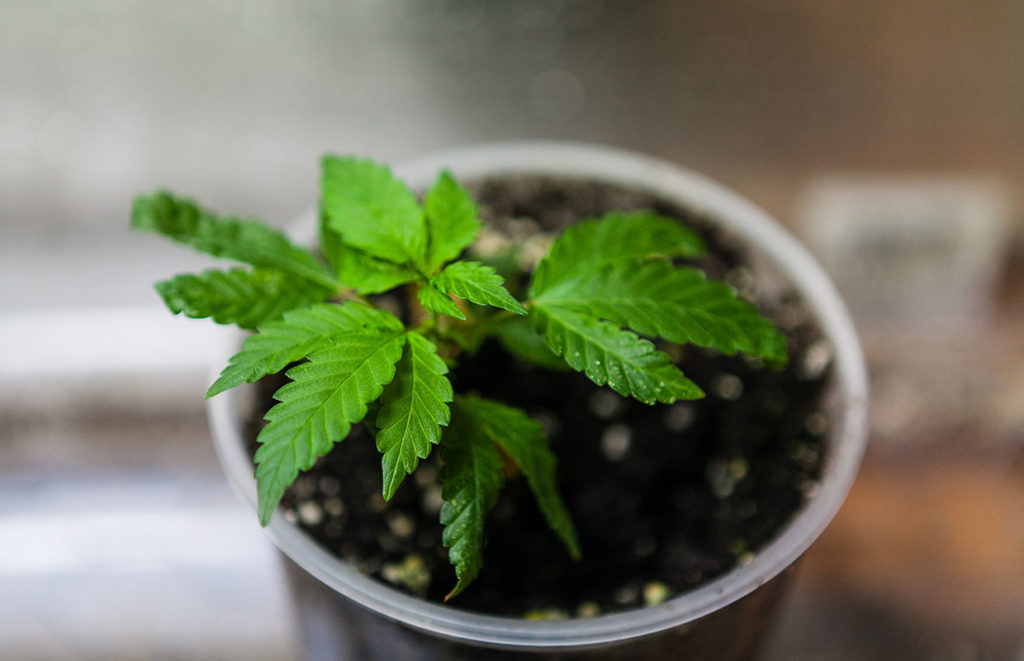
Build the Roots
Bennett says he kept his adolescent plants in a vegetative state under T5 fluorescent lighting from roughly March through April this year. The lights, referred to by growers as “veg” lighting, are relatively inexpensive and easy to set up and use. Cycling every day through 18 hours of lighted time and six hours of darkness, plants are provided with hefty amounts of light stimulation — like a runner training for a marathon — and are given enough time to rest and repair at night.
“Plants are really no different from humans in a lot of ways,” says Bennett. “During long summer days, particularly if you live in northern latitudes, a person might wake up at six or seven in the morning and not go to bed until midnight. All that sunlight helps you sleep at night like a rock for six to seven hours.”
Veg lighting, along with feeding plants energy-rich nutrients, are key to building deep and healthy root structures. In early May, Bennett could see through the translucent plastic containers that his roots were healthy and the plants were just about ready to go from T5 lighting to the outdoor bed. Each day for one week he brought his plants into natural daylight for a few hours, careful not to shock them with too much natural light.
“You don’t want to rush the plants out into constant daylight all at once,” he says. “The jolt of full-day sun can be too much, so you give them this break-in period for a few hours each day, then back into T5.”
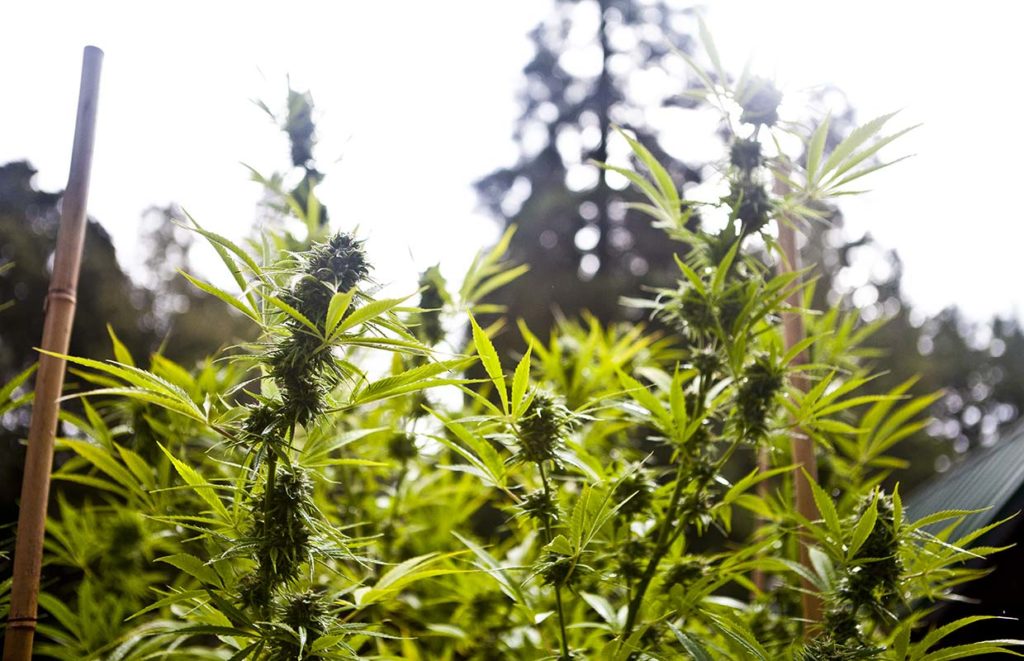
Growth of the Soil
After a week of alternating between T5 veg and sunlight, Bennett’s plants were ready to be set in the ground. On planting day, small holes 6-8 inches deep were dug and the plants were nested in place. He also laid down a layer of wood chip covering at the soil surface – to act as a barrier against the penetrating sun and to keep the soil moist – then thoroughly drenched the garden.
“My first watering is always really heavy,” says Bennett. “I water the entire bed in wide arcs all over to bring the garden and soil to life.”
Using strictly water for a solid week (holding off on liquid fertilizers for a time) Bennett is able to establish a baseline in the garden before adding extra nutrients.
“I want to make sure the plants like the soil I’ve prepared before adding any supplements,” he says. The first nutrient he always uses is fish oil and bat guano, which can be purchased at most home improvement stores for $10-15.
“I start with that once a week,” he says. “A shot glass of it mixed with two gallons of water, along with a regular watering regimen. I generally do more organic fertilizer than the directions recommend. The beauty of outdoor, that I’ve experienced at least, is plants will take only what they need to thrive.”
As the plants matured, Bennett kept a close eye out for deficiencies or excesses, generally apparent on the leaf, and inspected closely for male plants. Because flowering plants are always female, it was important to cull all male plants in the garden. One male among the garden can turn a whole plot “to seed” and ruin the garden. Having found a small sac growing on one of his Cherry Pie plants, he knew it had to go. Instead of cutting it at the stock, however, he used the male plant as a forensic tool to understand what the soil was doing to the garden’s root bed. Pulling the plant out below the roots he found a healthy, young root ball – with just a slight bit of muddy soil beneath it. That told him to back off on his watering regimen, at least on the south portion of the garden, which sloped slightly and caught excess water pooling at the corner of the bed.
Weeks went by with little more than watering and nutrient feeds and keeping an eye out for deficiencies and predator bugs.

Flowers for Friends
In August, the first blooms started to appear — small flowers like tiny white urchins. Some of the plants had grown to over 9 feet tall and had stalks thicker than he’d ever experienced. The Haze in particular – a strain Crop King Seeds calls “Haze Xtreme” – had a truly extreme stalk the size and shape of an elephant trunk. Standing next to the mythical tree-plant transported you to the jungles of Thailand.
“That Haze has a will of its own,” says Bennett. “It looks like the tree the Buddha found enlightenment under.”
Bennett remembers the two issues he faced last year — which he’s keeping a close eye on this year. The first was his arch nemesis: a nug-loving caterpillar that devastated several of his plants last year, chewing up near Lava Lamp-size kolas from the inside out. The second problem he had – one that can hardly even be called a problem — was dealing with giant limbs full of huge buds that needed staking.
“I had limbs breaking off under the weight of these mammoth buds,” he says. “I spent hours every day for weeks in August staking with bamboo to keep them from tearing off. One limb had an easy full ounce growing on it. I feel like an ass bemoaning that — it’s kind of like complaining that your girlfriend is too beautiful.”
Those heavy limbs that almost broke off, Bennett notes, were by no means a write off. Marijuana plants have this incredible ability to heal themselves quickly if cared for well. He created splints around them similar to the way a doctor would set a broken limb. The areas quickly healed, he says, creating a “callous” stronger than the limb itself.
Bennett admits that size isn’t always the mark of a thriving garden — but it surely is a sign you’ll pull some weight.
“I tend to these plants constantly,” he says. “You can’t get results like this unless you’re tending to the plants and watching them and listening to them.”
He does the math in his head, calculating roughly what each plant should produce by October, barring any mishaps. He’s using both hands to add up the ounces, keeping in mind those 20 friends.
“This crop should be mind-blowing again, probably surpassing last year,” he says wistfully. “There are going to be a lot of happy friends this Christmas.”
Originally published in Issue 17 of Cannabis Now. LEARN MORE
TELL US, have you ever tried to grow cannabis?



